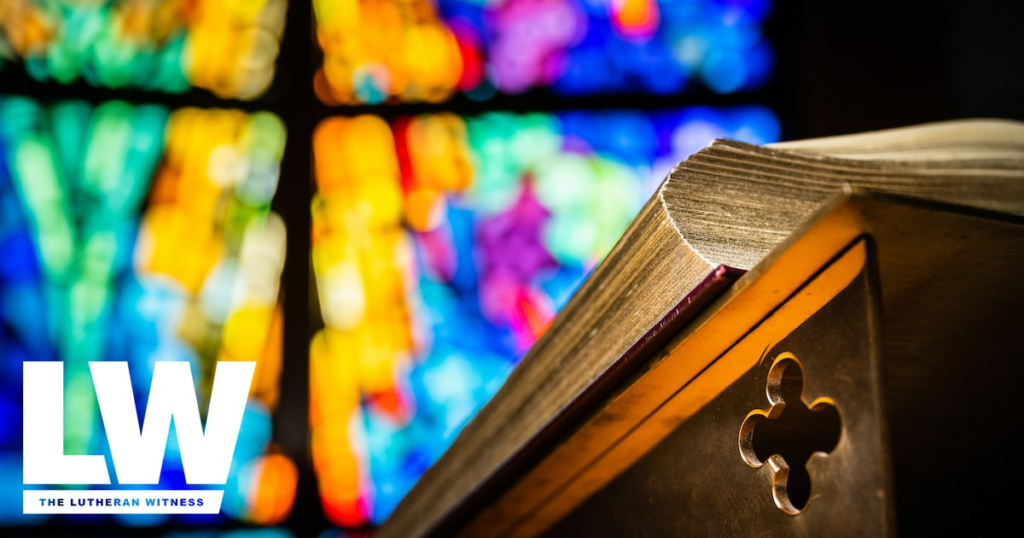How can we encourage religious literacy in our homes, schools and neighborhoods? Find out how to cultivate your curiosity about God and His work on your behalf.
by Rev. Travis J. Scholl
I am convinced by Stephen Prothero’s thesisstated most notably in his book Religious Literacy that we live in a society that is religiously illiterate to the point of failure. His subtitle says it all: What Every American Needs to Knowand Doesn’t.
But to test it out, let’s take a quick quiz: How many books are in the Torah (extra credit if you can name them)? What are the five pillars of Islam? Or here’s one to hit a little closer to home: Who can name the six chief parts of doctrine from Luther’s Small Catechism?
If you got any of these right, you’re at the top of the class. If you didn’t get any, you’re in good company.
The fact of the matter is that those who wax nostalgic about a past golden age of religious literacy, when anyone on the street could answer these questions, are more than likely carving a wax nose . . . or a figment of their imagination.
So, last October, when the Pew Forum on Religion and Public Life released its “U.S. Religious Knowledge Survey,” should we have been so surprised that those who claimed the Christian faith as their own fared so poorly? Perhaps not, but it was hard to pass it by when the headlines grabbed the fact that atheists and agnostics scored highest. (Although I like to point out that even the leading atheist/agnostic group answered about 65 percent of the survey questions correctly. In most of the classrooms I grew up in, that still got you a D.)
If we think about it, the survey stands to reason. When you grow up in a religious community, it is easy to take the religious architecture for granted. And when you make a conscious decision that “God” isn’t something that fits into your version of reality, you’d probably examine as many of the religious blueprints as you can before you throw them all away.
But what has made our religious illiteracy all the more urgent is the gaining complexity of religious demographics in society. Religious and cultural groups that do not fit under the label of White Anglo-Saxon Protestants (WASP), which includes many fellow Christians, are becoming more and more visible and assimilated into the cultural fabric. We can praise or bemoan this trend all we want, but it is an unavoidable reality, if not in your neighborhood then on the digital superhighway inside your laptop. (However, I would also point out that many who think these “others” aren’t in “my” neighborhood often aren’t looking closely enough at their neighbors.)
I, for one, don’t really find anything inherently threatening about the emerging religious plurality of America. First, it forces us to truly think about what it means to be a follower of Jesus Christ in today’s world. Second, the very fact that people are concerned about religious literacy and develop highly publicized surveys to collect data about it signals that religionin all its formsis still on the radar screen of American public life. That is a good thing. And it allows us as Christians to continue to find helpful and mature ways to give witness to our religious identity in society and culture, in what Luther referred to as the left-hand kingdom of God. After all, if God is ambidextrous, His disciples should be too.
So, where do we go from here? We can go to Wikipedia and get our answers half-right. Or we can do the real work of getting educated, cultivating a life that is continually learning what is happening in the world and what the deepest religious implications of it are.
That is easy to talk about but harder to put into practice. How does a religiously literate life happen? It happens in the educational ministries of our congregations. It happens in the educational institutions of our Synod, including their “continuing education” efforts, which are usually open to any and all, often with a click of a mouse. It even happens in opportunities in our local areas, where schools and organizations are more and more offering ways to explore the meaning of religious America.
Religious literacy happens as we feed our curiosity, keeping our ears and eyes open to what is going on in our neighborhoods, our country and our world. As any good education goes, these kinds of opportunities are places of argumentthe often exhilarating contest of ideas where we sometimes agree, sometimes disagree and other times agree to disagree. But that’s part of the education too, to learn to engage other people productively without becoming disagreeable or hostile.
In the end, these are the ways that learning becomes the bridge between faith and culture. It is the way we get over the gaps in our knowledge. It is how we lose our illiteracy and begin to be able to read and write our faith in a way that is intelligible to others. And now more than ever, it is how we become lifelong learners of how religion is at work in the world. Our witness to the Gospel deserves an awareness that is as deep as it is faithful.
—
>To read the Pew Forum survey, go to http://www.pewforum.org/Other-Beliefs-and-Practices/U-S-Religious-Knowledge-Survey.aspx
About the Author: The Rev. Travis J. Scholl is managing editor of theological publications at Concordia Seminary.
February 2012





